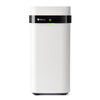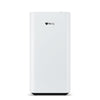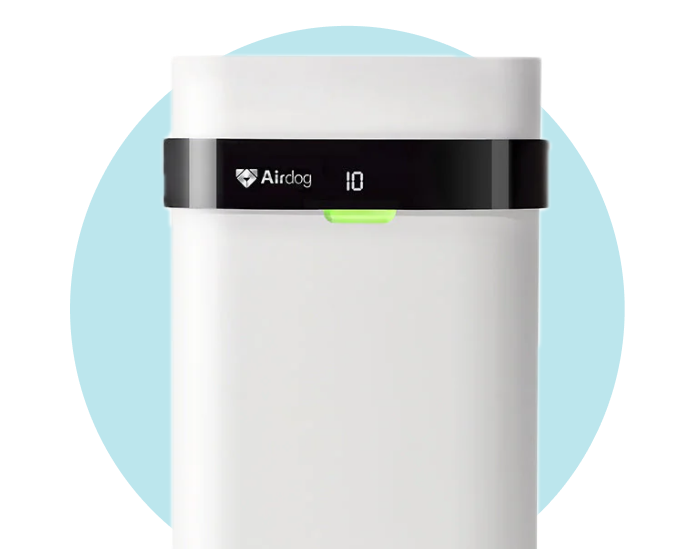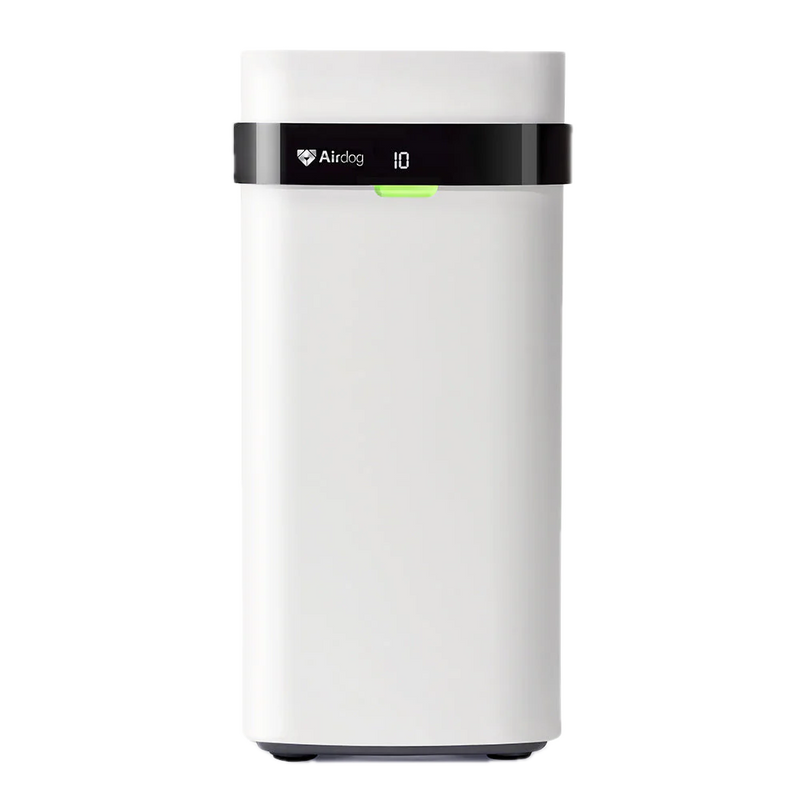Indoor air can sometimes be more polluted than the air outside, which makes creating a healthier home environment more important than ever. Among the many options people turn to, Himalayan salt lamps have become especially popular. Loved for their warm glow and calming ambiance, they’re also often promoted as natural air purifiers.
So, do salt lamps clean the air, or are they simply a cozy decoration with a wellness reputation? In this article, we’ll explore how salt lamps are believed to work—through hygroscopy (absorbing moisture from the air) and the idea of negative ions—while also looking at what science says about their effectiveness.
No matter the outcome, there’s no denying that salt lamps add beauty and comfort to a space. And sometimes, the things we bring into our homes support our well-being in more ways than one.
Understanding the Science Behind Salt Lamps
Himalayan salt lamps have garnered attention not only for their unique glow but also for the claims surrounding their air purifying capabilities and health benefits. Let’s take a closer look at the science behind these claims.
The Hygroscopic Nature of Salt Lamps
-
Principle of Hygroscopy: At the core of the discussion is the salt lamp's ability to attract and absorb water molecules from the surrounding environment. This characteristic, known as hygroscopy, suggests that salt lamps could theoretically help in removing water vapor and airborne particles, including dust and allergens, from indoor air acting as a form of air purifier.
-
Limited Purification Capabilities: Despite their hygroscopic nature, the actual impact of Himalayan salt lamps on air purification appears to be minimal. The heat emitted by the lamp's bulb, intended to enhance the hygroscopic effect, is unlikely to be sufficient for significant air purification. This limitation indicates that salt lamps, though intriguing in concept, may play more of a supporting role rather than serving as a primary solution for cleaner indoor air.
Skepticism on Negative Ion Generation
-
Questioning Ion Generation: The ability of salt lamps to generate negative ions — particles believed to have air purifying effects — is a major selling point. However, many experts remain skeptical about whether salt lamps can generate enough negative ions to meaningfully impact indoor air quality.
-
Insufficient Quantities: The key issue comes down to quantity. To have a real impact on air purification, negative ions need to be produced in large amounts. Research suggests that Himalayan salt lamps generate only a minimal level of ions, which likely isn’t enough to make it an efficient air purifier.
Improvement of Mood and Well-being
-
Claims of Enhanced Well-being: Advocates for Himalayan salt lamps often attribute mood enhancement and stress reduction to the soft ambient light they emit, alongside the supposed release of negative ions.
-
Evidence and Expert Opinions: Studies suggest that any mood-boosting effects of Himalayan salt lamps are more likely linked to their soothing light and ambiance than to ion emission. While the calming influence of ambient lighting is real and valuable, attributing these benefits to negative ions isn’t strongly supported by science.
By looking at the science behind how Himalayan salt lamps are thought to work—through hygroscopy and negative ion generation—it becomes clear that their impact on air quality may not live up to popular claims. Instead, their real value often lies in the calming ambiance and warm glow they bring to a space, rather than in significant health benefits.
Comparative Analysis with Other Air Purifying Methods
In the world of indoor air quality, there’s no shortage of options promising cleaner, healthier air. Himalayan salt lamps have earned attention for their warm glow and claimed health benefits, but when compared to proven air purification technologies, their limitations quickly stand out. In this section, we’ll take a closer look at how salt lamps stack up against established methods of air purification.
HEPA Filters
-
Proven Effectiveness: High-Efficiency Particulate Air (HEPA) filters stand out for their proven ability to trap at least 99.97% of particles of 0.3 microns in size. This includes dust, pollen, mold, bacteria, and any airborne particles with a size of 0.3 microns (µm).
-
Comparative Analysis: Unlike salt lamps, which lack hard scientific proof behind their claims, HEPA filters are rigorously tested and backed by decades of research. Their effectiveness isn’t just anecdotal—it’s measurable and reliable.
Airdog’s Ionization Technology
-
How It Works: Unlike Himalayan salt lamps, which produce negligible amounts of ions, and traditional ionizers, which can create harmful ozone as a byproduct, Airdog uses patented TPA® (Two Pole Active) technology. This system generates a controlled, high-density ion field that actively destroys and removes airborne pollutants — including allergens, bacteria, mold, and even viruses — at a microscopic level.
-
Salt Lamps vs. Ionization Machines: Salt lamps provide little more than aesthetic appeal, while commercial ionizers offer stronger ion generation but often at the cost of ozone emissions. Airdog takes the benefits of ionization further with a safe, ozone-free process that captures particles down to 0.0146 microns — far smaller than what HEPA filters or salt lamps can manage. This makes Airdog not just a safer alternative to ionizers, but also a far more effective solution for truly clean indoor air.
Effectiveness and Aesthetic Appeal
-
Choosing Based on Results: When selecting an air purifier, the top priority should always be effectiveness in improving indoor air quality. Himalayan salt lamps may add warmth and ambiance to a room, but they can’t compete with the proven performance of modern air purification systems.
-
Limitations of Salt Lamps: The charm of salt lamps comes from their glow, not their ability to clean the air. Their hygroscopic properties and minimal ion output fall far short of what’s needed for real purification. In contrast, solutions like Airdog’s patented TPA® technology combine advanced air-cleaning power with sleek, modern design — giving you both health benefits and a device you’ll actually want in your home.
The Importance of Proven Air Purification Methods
-
Health and Wellness Priority: For individuals focused on health — especially households with allergies, asthma, or other respiratory conditions — investing in a purifier with proven technology is essential. The priority should always be devices with a track record of effectively reducing airborne contaminants.
-
Aesthetic vs. Functional: Himalayan salt lamps may add beauty and ambiance to a room, but their role in air purification is minimal at best. While HEPA filters are widely recognized for their effectiveness, they come with drawbacks such as frequent costly replacements and limitations in capturing the smallest pollutants. Airdog’s patented TPA® technology overcomes these challenges, filtering particles down to 0.0146 microns without disposable filters — delivering cleaner air and a more sustainable solution for your home.
The exploration into the comparative effectiveness of Himalayan salt lamps and established air purifying methods underscores a critical point: the importance of basing health and wellness decisions on scientific evidence and proven results. While salt lamps may enhance the aesthetic of a space, those seeking tangible improvements in indoor air quality would do well to consider more robust, scientifically validated solutions.
Maintaining a Critical Eye Towards Health Trends
In today’s wellness-driven culture, it’s easy to be swept up in products that promise transformative health benefits without solid scientific backing. Himalayan salt lamps are a prime example — visually appealing and relaxing, but lacking the research to support their claims as true air purifiers. Recognizing this gap between marketing and reality helps individuals make more informed choices for their health and home environments.
-
Navigating Marketing vs. Reality: In an era where wellness trends frequently outpace scientific validation, the allure of solutions like Himalayan salt lamps serves as a reminder of the importance of discerning marketing claims from substantiated health benefits.
-
Commitment to Skepticism: Adopting a stance of informed skepticism enables individuals to question and critically evaluate the plethora of health and wellness trends that permeate the market, distinguishing between decorative items and effective health solutions.
-
Community Education: Sharing insights and findings within one's community fosters a collective awareness and understanding, encouraging a shift towards health and wellness practices grounded in scientific evidence rather than fleeting trends.
Striking the Balance Between Ambiance and Clean Air
While Himalayan salt lamps can add warmth and beauty to any space, their air-purifying claims remain largely unsupported by science. For those who want more than ambiance—especially individuals managing allergies, asthma, or other respiratory concerns—the priority should be proven air purification. That’s where solutions like Airdog’s patented TPA® technology shine. By combining comfort, aesthetic choices, and evidence-based solutions like Airdog, people can truly optimize both their living spaces and their well-being.





